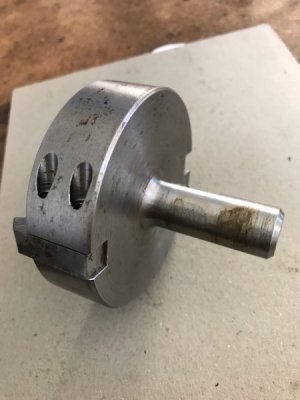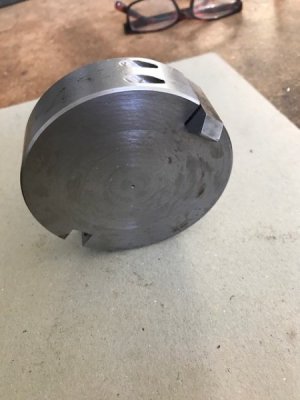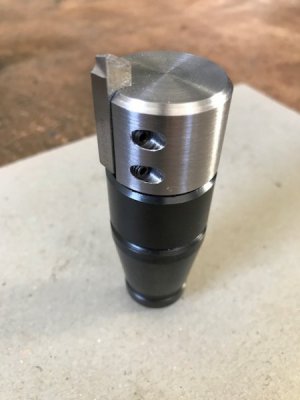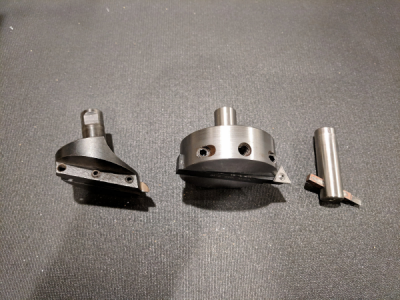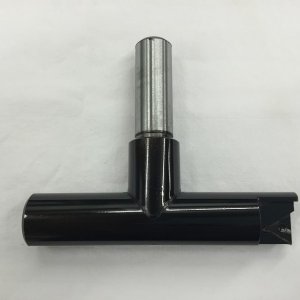So tell me, i am seeing mostly (or all) fly cuttters here, very "flat". What are the advantages to say something like these Grizzly fly cutters?
Griz fly cutter
Guns,
When I did the practice cuts with my fly cutter, I noticed a curious result. I got a beautiful finish when moving the table from right to left (feeding from the right). But when feeding from the left, it was obvious there was an ever-so-slight second engagement of the cutting tip when exiting the work piece. That's when I realized that if the mill is not perfectly indicated, the cutting edge is going to engage the work piece when it 'enters' the cut and also when it 'exits' the cut. Visualize it this way. If you're standing in front of the mill, in a perfect world, the head is going to be exactly perpendicular to the table - 12 o'clock straight up-and-down. But if it's off ever so slightly - say one second BEFORE 12 o-clock - the fly cutter will engage deeper on the left side of the cut than the right. So if you're feeding right to left, the back of the cut is 'higher' than the front, so you won't notice any distortion. But if you're feeding left to right, the cutter is going to engage the work piece twice: both when entering and exiting. (Obviously, that same phenomenon is occurring when using an end mill, but because of the larger sweep, it's only apparent when using a fly cutter.)
That's when it occurred to me, fly cutters seem to be fabricated according to one of two designs:
1. There is a single 'tooth' that lays PERPENDICULAR to the body of the fly cutter, and it is the only point which engages the work surface.
2. There is a tool 'bar' of some sort - a tool holder with an insert, or a HSS blank - either of which is laid PARALLEL to the body of the fly cutter.
Peruse through the pictures on this thread, and you'll see several examples of both.
In Type 1 fly cutters, there is no possibility for more than a single point of engagement between the cutting tool and the work piece. So even if the mill is not dead-perfectly indicated, the tool will do its job. (Obviously, in theory there will be some distortion, but unless the mill is way out of alignment, I would think it would be negligible. Thoughts from our experts?)
As noted above, however, Type 2 fly cutters have the potential to engage the work piece twice IF a. the fly cutter is milled exactly flat, AND b. the mill is even microscopically out of alignment. The solution to this potential problem seems to be to fabricate the cutter in such a way that the cutting tip enters the work at an exaggerated angle. This can be accomplished in one of two ways: Either by milling the 'face' of the cutter at an angle (which appears to be the way most commercially available cutters using a HSS blank are offered, like the Grizzly set you mentioned), or milling the 'slot' at an angle. Since I milled mine with both a flat face and slot, and the mill is evidently not dead-on indicated, an adjustment needed to be made. Hence, my solution of adding the set screw. (Just for the record, my mill is indicated but obviously not quite as 'true' as I thought. My guess is that may be the case for most hobby applications. Experts' thoughts?)
Bottom line is that regardless of design, ANY fly cutter should be constructed in such a way that the cutting tip only engages the work piece once per revolution. A properly constructed Type 1 or Type 2 will accomplish that.
Comments experts?
Regards,
Terry

